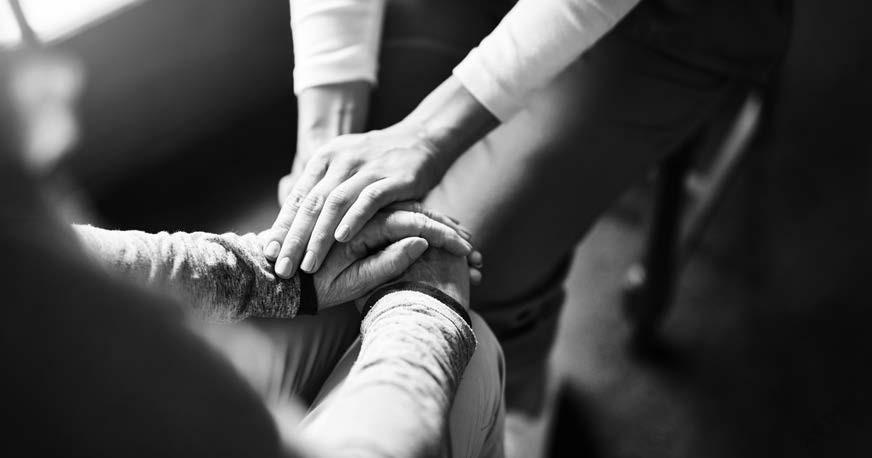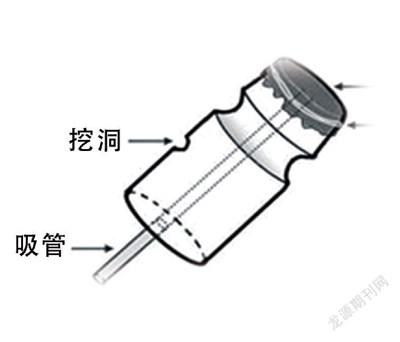中国龙
对龙图腾的崇拜在中国大约已绵延了八千多年。中国龙是古人将鱼,
蛇,马,牛等动物与云雾,雷电等自然天象集合而成的一种神物。中
国龙的形成与中华民族的多元融合过程同步。
在中国人的心目中, 龙
具有振奋腾飞,开拓变化的寓意和团结凝聚的精神。
Chinese Dragon
Dragon totem worship in China has been around for the last
8,000
years. The ancients in China considered the dragon (or Loong)
a fetish
that
combines animals including
the fish,
snake, horse
and ox with cloud, thunder, lightning and other natural
celestial phenomena. The Chinese dragon was formed in
accordance with the multicultural
fusion
process of the Chinese
nation. To the Chinese, the dragon signifies innovation and
cohesion.
饺子
饺子是深受中国人民喜爱的传统特色食品。
相传为古代医圣张仲景发明。饺子的制作是包括: 1)擀皮、2)备馅、 3)包馅水煮三个步骤。
其特点是皮薄馅嫩,味道鲜美,形状独特,百食不厌。民间有 " 好吃不过饺子 " 的俗语。中国人接亲待友。逢年过节都有包饺子吃的习俗,寓意吉利。对崇尚亲情的中国人来说, " 更岁交子 " 吃饺子,更是欢度
页脚内容
除夕、辞旧迎新必不可少的内容。
Dumplings
Dumplings are one of the Chinese people's
favorite
traditional
dishes.
According to an ancient
Chinese legend,
dumplings were
first made by the medical saint-Zhang Zhongjing. There are
three steps involved in making dumplings: 1) make dumpling
wrappers out of dumpling flour; 2) prepare the dumpling
stuffing;
3) makedumplings and boil
them. With thin
and elastic
dough skin, freshen and tender stuffing, delicious taste, and unique shapes, dumplings are worth eating hundreds of times.
There's an old saying that claims, "Nothing could be more
delicious
than dumplings."
During the Spring Festival
and other
holidays
or when treating
relatives
and friends,
Chinese people
like to follow the auspicious custom of eating dumplings. To
Chinese people who show high reverence for family love, having dumplings at the moment the old year is replaced by the new is
an essential part of bidding farewell to the old and ushering in the New Year.
针灸
针灸是中医学的重要组成部分。
按照中医的经络理论, 针灸疗法主要
是通过疏通经络、调和气血,来达到阴阳归于平衡,使脏腑趋于调和
之目的。其特点是 " 内病外治 " 。主要疗法是用针刺入病人身体的一定
页脚内容
穴位,或用艾火的温热刺激烧灼病人的穴位。以达到刺激经络,治疗
病痛的目的。针灸以其独特的优势,流传至今病传播到了世界,与中
餐、功夫、中药一起被海外赞誉为中国的" 新四大国粹 " 。
Acupuncture
Acupuncture is an important part of traditional Chinese
medicine (TCM). In accordance with the "main and collateral
channels" theory
in TCM,the
purpose of acupuncture is to
dredge
the channel
and regulate
qi
and blood,
so as to keep the
body's
yin and yang balanced and achieve reconciliation between the
internal organs. It features in traditional Chinese medicine
that "internal diseases are to b e treated with external
therapy"/ the main therapy of acupuncture involves using
needles to pierce certain acupoints of the patient's body, or
adopting moxibustion to stimulate the patient's acupoints so
as to stimulate the channels
and relieve
pain.
With its
unique
advantages,
acupuncture has
been handed down generation
after
generation and has now spread all over the world. Nowadays,
acupuncture, along
with
Chinese food,
kungfu
(otherwise
known
as Chinese martial
arts),
and traditional
Chinese medicine, has
been internationally hailed as one of the "four new national
treasures".
中国汉字汉字是从原始人用以记事的简单图画,
经过不断演变发展最
页脚内容
终成为一种兼具音、形、意、韵的独特文字。现存中国古代最早成熟
的文字是甲骨文,被认为是现代汉字的初形。此后,汉字又经历了金
文、隶书、楷书、草书、行书等不同的阶段。汉字结构
"内圆外方 ",
源于古人 " 天圆地方 " 的观念。汉字有五种基本笔画, 即:横、竖、撇、
捺、折。
Chinese characters
Chinese characters were initially meant to be simple pictures
use to help people remember things. After a long period of
development, it finally became a unique character system that
embodies phonetic sound, image, idea, and rhyme at the same time. The writing system, which was extremely advanced in ancient times, began with inscriptions on bones and tortoise shells,
and these are regarded as the original forms of Chinese characters. Afterwards, Chinese characters went through
numerous calligraphic styles: bronze inscriptions, official script, regular script, cursive script, running script, etc.
Chinese characters
are usually
round outside
and square inside,
which is rooted
in ancient
Chinese beliefs
of an orbicular
sky
and a rectangular Earth. The five basic strokes of Chinese
characters are "
一" (the horizontal stroke), "
丨" (the
vertical stroke), "
丿" (the left-falling stroke), "
捺" (the
right-falling stroke), and "
乙" (the turning stroke).
页脚内容
中国筷子
中国人使用筷子就餐的方式在世界独树一帜。
有史记载用筷的历史已
有三千多年。筷子古时称为箸,它看似简单,但却同时具有夹、拨、
挑、扒、拌、撮、戳、撕等多种功能。中国民间视筷子为吉祥之物,
如婚俗中将筷子隐喻为快生贵子的祝福等。
与使用刀叉以及手抓的方
式不同,
成双结对的筷子含有 " 和为贵 " 的意蕴。西方人赞誉筷子是
古老的东方文明。
Chinese chopsticks
The Chinese way of eating with chopsticks is unique in the world. The recorded history of chopsticks started more than three
thousand years ago. Chopsticks were named zhu in ancient
Chinese. They look deceptively simple to use, but possess multi-various functions, such as clamping, turning over,
lifting up, raking, stirring, scooping, poking, tearing, and
so on. Chopsticks were taken as an auspicious mascot by ordinary people in ancient China. For example, the partial tone of
chopsticks is often used by people as a metaphor at weddings to indicate a blessing or benediction for the couple to have
a baby soon. Unlike using a knife and fork or one's own hands, a pair of chopsticks also implies the meaning of "Harmony is what matters". Chopsticks are highly praised by westerners as
a hallmark of ancient oriental civilization.
页脚内容
中国印章
印章就是图章。中国历代官、私所用的印章有印信、 朱记、合同、符、
契等等不同的称谓,而帝王所用的印章古时称玺、印、宝、章等。据
史料记载,印章在战国时代(前
475- 前 221)已普遍使用。
印章的制作时将篆隶等字体、图像用阴、阳的形式雕刻而成,形状以圆、方
为主。印章用朱色钤章,除日常应用外,又多用于书画题识,逐渐成
为中国特有的艺术形式之一。
Chinese seal
A seal can also be defined as a stamp. Both the Chinese official and private seal of various dynasties have different titles, such as stamp, zhu not, contract, fu, lease and others. The
seals used by the emperors of ancient
China were called
xi,
yin,
bao, etc.. According to historical records, seals were widely
used during the Warring States period (475 BC ---221 BC). The
making of a seal is to engrave fonts, such as seal characters
and official
script
and so on; or images in the form of intaglio
and embossment into the seal, basically shaped as round or
square. Covered with a vermilion overlay, the Chinese seal is
not only used in daily life, but it is also used to represent signatures on paintings and calligraphies. It is gradually
becoming one of China's unique artworks.
天干地支
页脚内容
天干地支是中国历法中用以记录和命名年岁的方法。
十天干为:甲乙
丙丁戊己庚辛壬癸;十二天干为:子丑寅卯辰巳午未申酉戌亥。古人
观测朔望月,发现月亮圆缺
12 次大体上是一年的天数,而两个朔望
月约是 60 天。古人以十天干与十二地支的顺序依次相配,记录不同
年份,60 年为一个轮回。
干支纪年法从古沿用至今。
按干支纪年法,
2011 年便是辛卯年。
Chinese era
The Chinese era is the symbol that the Chinese calendar uses
for
recording
and naming years. The ten Heavenly Stems are: jia,
yi,
bing, ding, wu, ji,
geng, xin,
ren,
gui.
The twelve Earthly
Branches are:
zi,
chou,
yin,
mou, chen,
si,
wu, wei,
shen,
you,
xu, hai. After observing the lunar month, the ancients found
that the moon always waxes and wanes roughly 12 times a year,
and two lunar months account for about 60 days. So the order
of the ten Heavenly Stems and the order of the twelve Earthly
Branches are properly matched in turn. In terms of recording
date, 60 years
is
considered
to be a full
time
cycle.
The Chinese
ear
chronology
was first
invented
in ancient
times and is
still
in use now. According to the chronology of the "ten Heavenly
Stems", 2011 is the year of "the seventh of the ten Heavenly
Stems" and "the fifth of the twelve Earthly Branches".
饺子是深受中国人民喜爱的传统特色食品。相传为古代医圣
张仲景
页脚内容
发明。饺子的制作是包括: 1) 擀皮、2) 备焰、3) 包馅 水煮三个步骤。
其特点是皮薄馅嫩,味道鲜美,形状独特,百食
不厌。民间有 " 好吃
不过饺子 " 的俗语。中国人接亲待友、逢年 过节都有包铰子吃的习俗,
寓意吉利。对崇尚亲情的中国人来讲,
" 更岁交子 " 吃饺子,更是欢
度除夕、辞旧迎新必不可少的内容。
Dumplings
Dumplings are one of the Chinese people's
favorite
traditional
dishes.
According to an ancient
Chinese legend,
dumplings were
first made by the medical saint- Zhang Zhongjing. There are
three steps involved in making dumplings: 1) make dumpling
wrappers out of dumpling flour; 2) prepare the dumpling
stuffing;
3) makedumplings and boil
them. With thin
and elastic
dough skin, fresh and tender stuffing, delicious taste, and
unique shapes, dumplings are worth eating hundreds of times.
There's an old saying that claims, "Nothing could be more
delicious
than dumplings."
During the Spring Festival
and other
holidays, or when treating relatives and friends, Chinese
people Like to follow
the auspicious
custom of eating
dumplings.
To Chinese people who show high reverence for family love,
having dumplings at
the moment the old year is replaced
by the
new is an essential part of bidding farewell to the old and
ushering in the New Year.
页脚内容
中国功夫
中国功夫即中国武术,是将技击寓于搏斗和套路运动之中的
中国传
统体育项目,承载着丰富的中国民族传统文化。其核心思
想是儒家
的中和养气之说,同时兼容了道家、释家的思想。中国
武术源远流
长、流派林立、拳种繁多,讲究刚柔并济、内外兼修, 蕴含着先哲们对生命和宇宙的参悟。
后世所称十八般武艺, 主要 指:徒手拳艺,
如太极拳、形意拳、八卦掌等;器械功夫,如刀
枪剑戟、斧钺钩叉
等。
Chinese Kung Fu
Chinese Kung fu, or Chinese martial arts, carries traditional
Chinese culture
in abundance. It
is a traditional
Chinese sport
which applies the art of attack and defense in combat and the
motions engaged with a series
of skill
and tricks.
The core idea
of Chinese Kung fu is derived
from the Confucian theory
of both
"the mean and harmony" and "cultivating qi" (otherwise known
as nourishing one's spirit). Meanwhile, it also includes
thoughts of Taoism and Buddhism. Chinese kung fu has a long
history, with multi-various sects and many different boxing
styles, and emphasizes coupling hardness with softness and
internal and external training. It contains the ancient great
thinkers' pondering of life and the universe. The skills in
wielding
the 18 kinds of weapons namedby the later
generations
页脚内容
mainly involve
the skills
of bare-handed boxing,
such as shadow
boxing (Taijiquan), form and will boxing (Xingyiquan), eight
trigram
palm (Baguazhang),
and the skills
of kung fu weaponry,
such as the skill
of using swords, spears,
two-edged swords and
halberds, axes, tomahawks, hooks, prongs and so on.
剪纸( paper cutting
)是中国最为流行的传统民间艺术形式之一。
中国剪纸有一千五百多年的历史,在明朝和清朝时期(
the Ming and
Qing Dynasties )特别流行。人们常用剪纸美化居家环境。特别是在
春节和婚庆期间,剪纸被用来装饰门窗和房间,以增加喜庆的气氛。
剪纸最常用的颜色是红色, 象征健康和兴旺。
中国剪纸在世界各地很
受欢迎,经常被用作馈赠外国友人的礼物。
Paper cutting is one of China's most popular traditional folk arts. Chinese paper cutting has a history of more than 1,500
years.
It
was widespread particularly
during
the Ming and Qing
Dynasties. People often beautify their homes with paper
cuttings.
During the Spring Festival
and wedding celebrations,
in particular, paper cutting are used to decorate doors, windows and rooms in order to enhance the joyous atmosphere. The color most frequently used in paper cutting is red, which symbolizes health and prosperity. Chinese paper cutting is very popular around the world and it is often given as a present to
foreign friends.
页脚内容
酒是中国人生活中的重要饮料之一。
中国制酒源远流长,享誉中外。
在中国最具有代表性的酒莫过于白酒了,
从某种角度上来说, 中国的酒文化就是白酒文化。
酒在中国人眼里更多的是一种交际的工具。
酒
渗透于整个中华五千年的文明史中,
从文学创作、 文化娱乐到饮食烹
饪、养生保健等各方面在中国人生活中都占有重要的位置。
Alcohol is one of the important drinks in Chinese people's life. Chinese alcohol-making has a long history and has been renowned at home and abroad. In China, no alcohol is more representative than Chinese liquor and at some point, Chinese
alcohol culture is Chinese liquor culture. Alcohol is more of a communication tool in Chinese people's eyes. Alcohol has
permeated 5000 years' civilization of the whole Chinese history, which plays an important role in every aspect of Chinese
people's life, from literary and artistic creation and entertainment to food and cooking and health preservation.
中国武术(Chinese martial arts )是中国民族体育的主要内容之一,是几千年来中国人民用以锻炼身体和自卫的一种方法。
中国武术主要内容包括搏击技巧,格斗手法,攻防策略和武器使用等技术,是以自立、自强、健体养生为目标的体育活动。它体现出中国人对攻防技术及策略的理解。中国武术对生命真理探索的人文哲学的特色对现今中
国的大众文化有着深远的影响。
页脚内容
Chinese martial arts is one of the main contents of China's national sports. It is one means by which Chinese people have
been building up their bodies and defending themselves. Chinese martial arts mainly includes skills like fighting skills,
wrestling techniques, attacking and defending strategies and weapon applications. It is a kind of sport that aims at
independence, self-reliance and health fitness. It reflects Chinese people's understanding of attacking and defending
skills and strategies. The humanistic philosophy of Chinese martial arts, which features the exploration of the truth of
the life, has profound influence on Chinese mass culture nowadays.
瓷器是中国最为重要的手工艺之一。
中国瓷器有 3500 多年的历史,
明清时期尤其繁荣。瓷器不仅可以用作日常餐具(
dinnerware) 、花
瓶等,精美的瓷器更是常常被人们用来装饰家居。
作为高档艺术品的象征,真品瓷器常常具有极高的艺术价值和经济价值,因此,长被很
多人视为珍藏品。
中国瓷器受到各国人民的欢迎,
经常被用作表达中
外友谊的礼物。
Porcelain
is one of China's most important
handicrafts.
Chinese
porcelain has a history of more than 3,500 years, its most
prosperous period being Ming and Qing Dynasties.
Porcelains
can
be used as daily
dinnerware
and vases, and delicate
porcelains
页脚内容
are even commonly used for homedecoration
by people. As symbols
of high-end works of art, authentic porcelains are often of
extremely high artistic and economic value and therefore they
are often regarded as precious collections by many people.
Chinese porcelains are popular with people around the world,
and they are often used as presents for expressing friendship
between Chinese and foreign people.
每年 4 月 4 日、 5 日或 6 日是清明节( the Qingming Festival)
。清
明节后气温升高,雨水增多。清明节既是中国的传统节日,也是最重
要的祭祀( commemoration)节日。在这一天,汉族和少数民族都会
供奉祖先,为逝去的人扫墓。清明节也是阳光明媚、草木吐绿的时节。
自古以来,人们就有清明踏青
(Spring
outings) 的习俗。人们还会在
清明节放风筝。这时植树树苗存活率高,之后也长的快,因此清明节
也是植树的好时候。
The Qingming Festival falls on April 4,5,or 6 each year.
After the festival, the temperature rises up and rainfall increases. The Qingming festival is not only a traditional festival in China, but also the most important festival of
commemoration. Both the Han nationality and minority nationality offer sacrifices to their ancestors and sweep the tombs of the deceased at this time. The Qingming Festival is
a time when the sun shines brightly,
the trees
and grass become
页脚内容
green. Since ancient times, people have followed the custom of Spring outings. People love to fly kits during the Qingming Festival. The Qingming Festival is also a good time to plant
trees,
for the survival rate of saplings is high and trees grow fast later.
风筝是中国传统的民间艺术之一。中国风筝在春秋时期(
Spring and
Autumn Period )就已出现,距今有两千多年的历史了。最初的风筝
常用作军事用途,如测量距离、测试风向和通讯。后来它逐渐与神话
故事、花鸟瑞兽、吉祥寓意
(auspicious meanings)
等结合,从而形
成了独具特色的风筝文化。
阳光明媚的春日里, 人们常常结伴去放风
筝。中国风筝也受到世界各国人们的喜爱,
很早以前就传到了世界各
地。
The kite is one of the Chinese traditional folk arts. The
Chinese kite came into being in the Spring and Autumn Period
and since then it
has had a history
of over two thousand years.
Kites
were used for
military
purpose initially,
like
measuring
distances,
testing
wind directions,
and communications.
Later,
it is integrated with fairy tales, luck characters such as
flowers, birds and beasts and auspicious meanings and thus a
unique kite culture with characteristics has been formed. In
sunny spring
days, people usually
go for
companyoutings
to fly
kites. The Chinese kite
has also been
loved by people
from all
页脚内容
over the world,
for it
was introduced
into
the globe a long time
ago.
中国结( Chinese knot )是中国古老文明的一个缩影,
是中国特有
的民间手工艺术。中国结有着悠久的历史,在明清时期尤为盛行。在
现代,它通常被用作室内装饰、 亲友间的馈赠礼物及个人的随身饰物。
因其外观对称( symmetrical )精致,符合中国传统装饰的习俗和审
美观念,故被命名为中国结。在北京申办
2008 年奥运会的过程中,
中国结作为中国传统文化的象征,深受各国朋友的喜爱。
Chinese Knot is a miniature
of the ancient
Chinese civilization,
and it
is unique to Chinese traditional
manual art.
Chinese Knot
has a long history,
and is especially
prevalent
in the Ming and
Qing Dynasties. In modern times, it usually functions as
interior decoration, gift among relatives and friends, and
personal
ornament. It
is possessed of delicate
and symmetrical
appearance and accords with the conventions of Chinese
traditional
decoration
and aesthetics, therefore, it
is named
Chinese Knot. Chinese Knot, which symbolizes Chinese
traditional culture, is well received by people all over the
world in the course of the China's bid for hosting the 2008
Olympics.
中国烹饪 (Chinese cuisine)
文化是中国文化中有关烹饪和休闲的重
要组成部分。中国悠久的历史、广袤的疆土、好客的习俗孕育了这一
页脚内容
独特的艺术。中餐以其 " 色、香、味、形 " 俱全而著称。它讲究原料的选配,食物的质地,佐料( seasonings )的调制,切菜的刀功,适时
的烹调以及装盘艺术。最负盛名的菜系有南方粤菜,北方鲁菜,东部
淮阳菜和西部川菜,以
" 南淡北咸,东甜西辣 " 见称。
Chinese cuisine
culture
is an important
part of Chinese culture
in the aspect of cooking and leisure. This unique art owes
itself to the long history, vast territory and hospitable
tradition of China. Chinese food is famous for its perfect
combination of "color, aroma, taste and appearance". It gives
emphasis to the selection
of raw materials,
the texture
of food,
the blending of seasonings, slicing techniques, the perfect
timing
of cooking and the art of laying
out the food on the plate.
among the best-known schools of cuisine are the Cantonese
cuisine of the south, the Shandong cuisine of the north, the
Huai-Yang cuisine of the east and the Sichuan cuisine of the
west, noted as "the
light
flavor
of the south,
the salty
flavor
of the north, the sweet flavor of the east and the spicy-hot flavor of the west".
中国丝绸
中国式丝绸的故乡。栽桑、养蚕、缫丝、织绸是中国古代人民的伟大
发明。商州时期(前
1600-前 256)丝绸的生产技术就已经发展到相
当高的水平。西汉(前
206- 公元 25)时张骞通西域,把中原与波斯
页脚内容
湾、地中海紧密联系起来, 开辟了中外交流贸易的新纪元。从此中国
的丝绸以其卓越的品质、 精美的花色和丰富的文化内涵闻名于世,
成
为中国文化的象征、东方文明的使者。
Chinese silk
China is the homeof silk.
Mulberry
planting,
sericulture,
silk
reeling
and thickening
are all
great inventions
of the ancient
Chinese. As early as the Shang and Zhou Dynasties
(1600BC-256BC), the Chinese people's silk-weaving techniques had reached an extremely high level. During the Western Han
Dynasty (206BC-25AD), Zhang Qian, an outstanding diplomat,
travlled around central Asia and connected China with the
Persian Gulf and the Mediterranean, opening up a new era of
Sino-foreign trade,
exchange and communication. From
then on,
China's silk became well known for its extraordinary quality,
exquisite
design and color,
and abundant cultural
connotation.
Hitherto,
Chinese silk
has been accepted as a symbol of Chinese
culture and the emissary of oriental civilization.
中国园林
中国园林是把人造的山水、 植物、建筑等与自然地貌有机结合的环境艺术, 是我国古代建筑艺术的珍宝。其建造原则是 " 妙极自然,宛自天开 " 。游赏中国古典园林,能充分领略 " 假自然之景,创山水真趣 " 的园林意境。
在世界三大园林体系中,中国园林历史悠久,内涵丰
页脚内容
富,被誉为世界造园史上的渊源之一。
Chinese classical garden
The Chinese classical garden is a precious treasure of our
ancient
Chinese architecture.
It
is an kind of environment art,
which systematically
combines artificial
mountains and rivers,
plants and buildings with the natural landscape. The
construction standard of a Chinese classical garden is "artificial as it is, the garden must look ingenious and
natural". Whenyou go sightseeing in a Chinese classical garden, you should be able to appreciate its aristic concept which
"makes use of the natural landscape to create the real fun of mountains and rivers for viewers." Of the world's three major garden systems, the Chinese classical garden is hailed as one of the origins of the world's garden due to its long history
and abundant connotations.
文房四宝
笔墨纸砚是中国古代文人书房当中必备的宝贝, 被称为 " 文房四宝 " 。用笔墨书写绘画在中国可追溯到五千年前。秦(前 221- 前 206)时已用不同硬度的毛和竹管制笔;汉代(前 206- 公元 220)以人工制墨替代了天然墨;有了纸张以后,简牍锦帛逐失其用;砚台则随笔墨的使
用而发展。" 文房四宝 " 到宋朝(960-1279)以后特指湖笔(浙江湖州)、徽墨(安徽徽州)、宣纸(安徽宣州)、端砚(广东肇庆, 古称端州)。
页脚内容
可以说文房四宝书写了整个中华文明。
The four treasures of the study
The writing brush, ink stick, ink stone, and paper were requisite treasures in the study of the scholars of ancient China, and they are often referred to as the "Four Treasures of the Study". The writing brush and ink stick have been used
by the Chinese to write and paint since 5,000 years ago. In the Qin Dynasty (221BC-206BC), people already used feathers of
different hardness and bamboo trunks to make brushes. During the Han Dynasty (206BC-220AD), man-made ink was used instead
of natural
ink.
After
paper was invented
by the Chinese, bamboo
slips, wooden tablets, brocade and silk, which originally
functioned as writing surfaces, gradually faded out. The ink
stone was first developed with the use of writing brushes and
ink.
after
the Song Dynasty(960AD-1279AD), the "Four Treasures
of the Study" particularly
referred
to hubi,
the writing
brush
produced in Huzhou, Zhejiang province; huimo, the instick
produced in Huizhou, Anhui province;
xuan paper, a kind of paper
produced in Xuanzhou, Anhui province; and duanyan, the ink
stone made






